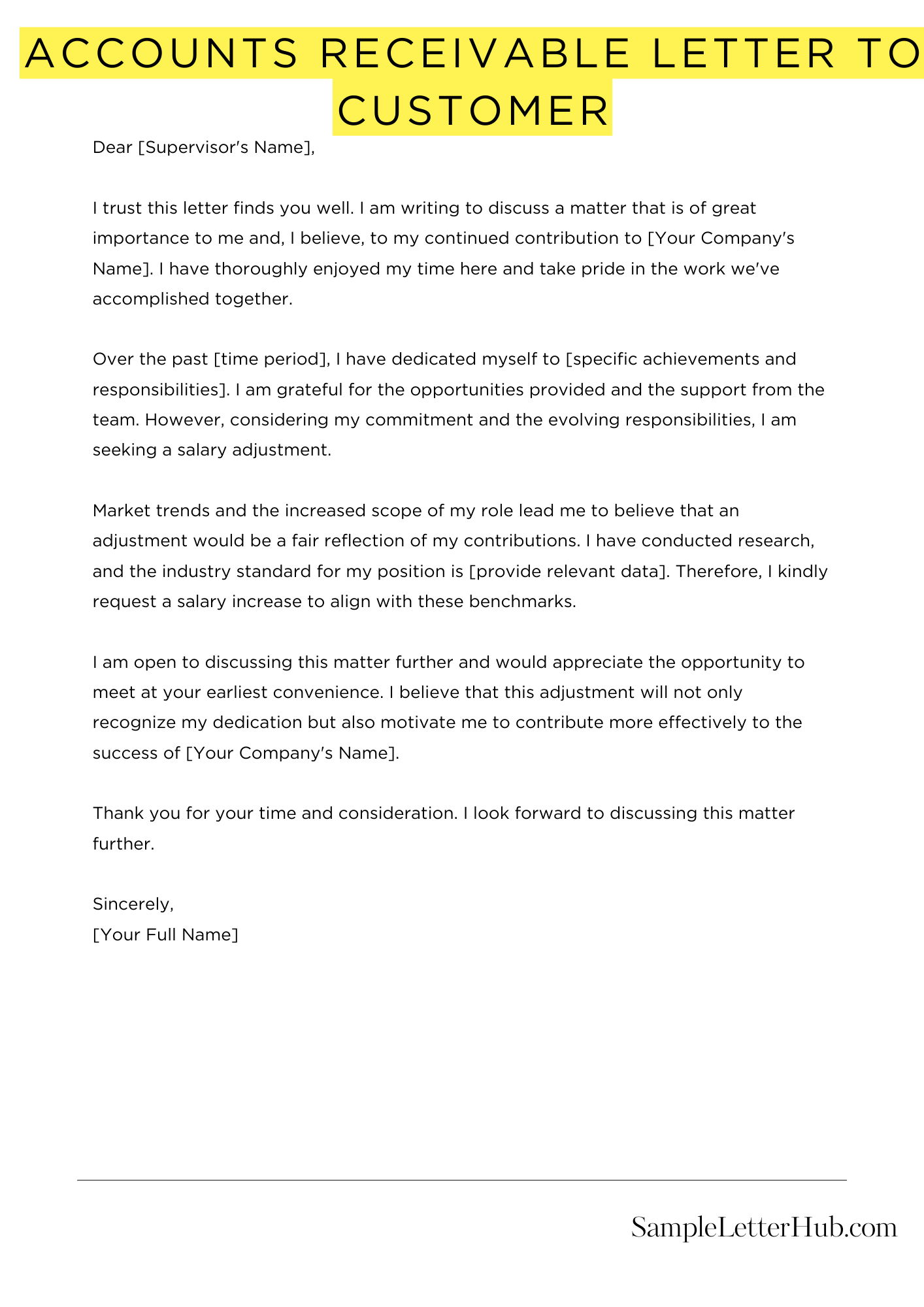Accounts Receivable Letter To Customer is a formal letter sent by a business to a customer who owes money for goods or services. The purpose of this letter is to request payment and provide the customer with important information about their outstanding balance.
In this article, we will share several templates, examples, and samples of Accounts Receivable Letter To Customer. These letters are designed to make it easy for you to write a clear and professional letter that will help you collect your outstanding payments.
Accounts Receivable Letter to Customer
Dear [Customer Name],
We hope this letter finds you well.
We are writing to you regarding invoice [Invoice Number], which is currently overdue. The invoice was issued on [Invoice Date] for the amount of [Invoice Amount].
We understand that there may be circumstances that have caused a delay in payment. However, we would appreciate it if you could prioritize settling this outstanding balance.
Your prompt attention to this matter would be greatly appreciated. If you have any questions or require assistance, please do not hesitate to contact us.
Thank you for your attention to this matter.
Sincerely,
[Your Name]

How to Write Accounts Receivable Letter To Customer
When a customer owes your business money, it’s important to send them an accounts receivable letter to remind them of their obligation. This letter should be professional and polite, but it should also be clear and concise.
Here are some tips for writing an effective accounts receivable letter:
- Use a professional tone. Your letter should be written in a professional and businesslike tone. Avoid using slang or informal language.
- Be clear and concise. Your letter should be easy to read and understand. Use short sentences and paragraphs, and avoid using jargon or technical terms.
- State the amount of money owed. Be sure to include the total amount of money that the customer owes you, as well as the invoice number(s) and due date(s).
- Offer a payment plan. If the customer is unable to pay the full amount of their debt at once, you may be willing to offer them a payment plan. This will allow them to pay off their debt over time.
- Include your contact information. Be sure to include your contact information at the bottom of the letter so that the customer can reach you if they have any questions.
By following these tips, you can write an effective accounts receivable letter that will help you collect the money that you are owed.
FAQs about Accounts Receivable Letter To Customer
What is an accounts receivable letter?
An accounts receivable letter is a formal communication sent by a business to a customer who has not paid an invoice on time. The letter typically includes information about the overdue invoice, the amount due, and the payment terms.
When should I send an accounts receivable letter?
You should send an accounts receivable letter when a customer has not paid an invoice by the due date. It is important to send the letter promptly to avoid further delays in payment.
What should I include in an accounts receivable letter?
An accounts receivable letter should include the following information:
- The customer’s name and address
- The invoice number and date
- The amount due
- The payment terms
- A request for payment
How can I make my accounts receivable letters more effective?
There are a few things you can do to make your accounts receivable letters more effective:
- Use a professional tone
- Be clear and concise
- Include all of the necessary information
- Follow up with customers who do not respond to your first letter
What are some tips for writing an effective accounts receivable letter?
Here are a few tips for writing an effective accounts receivable letter:
- Start with a friendly greeting
- State the purpose of your letter
- Provide specific details about the overdue invoice
- Request payment by a specific date
- Offer to help the customer with any questions or concerns

